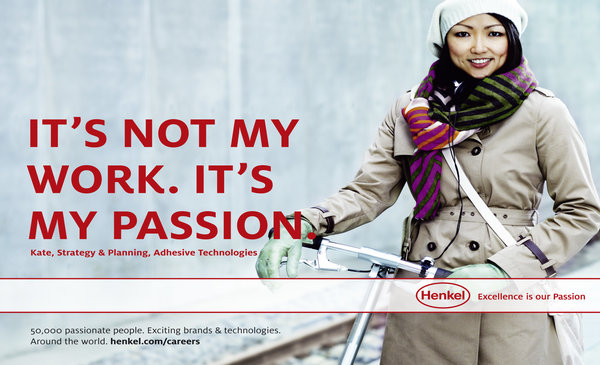In the late 1990’s I had the opportunity to chair the first conference focused on internal brand building. Almost a decade later this concept remains in its infancy for much of the business world. I’m reminded of this when I hear something similar to the following from marketing executives:
“We conducted exhaustive consumer research. We carefully positioned our brand. We developed and instituted comprehensive brand identity standards and systems. We are running our new advertising campaign. Now what do we do? How do we get the rest of the organization to understand and care about the brand and its promise? How do we get the organization to deliver on the promise? How do we make the brand promise real?”
Those questions drove us to create an internal brand building workshop which we deliver regularly at organizations.
David Aaker posed this very important question when he visited Hallmark during my tenure:
“Until everyone from your CEO to your receptionist can accurately and consistently articulate your brand’s promise, how do you expect your customers to?”
Kristin Zhivago captured the concept well in an article that she wrote for Business Marketing. She said:
“A brand is not an icon, a slogan, or a mission statement. It is a promise — a promise your company can keep. First you find out, using research, what promises your customers want companies like yours to make and keep, using the products, processes and people in your company. Then you look at your competition and decide which promise would give you the best competitive advantage. This is the promise you make and keep in every marketing activity, every action, every corporate decision, and every customer interaction. You promote it internally and externally. The promise drives budgets and stops arguments. If everyone in the company knows what the promise is, and knows that they will be rewarded or punished depending on the personal commitment to the promise, politics and personal turf issues start to disappear.”
Certainly the brand promise drives your marketing communication and your brand identity standards and systems. But it must do much more than that. Your products and services, every point of contact your brand makes with consumers and the total consumer experience your brand creates must reinforce your brand’s promise. This has tremendous organizational implications. How can an organization deliver against its promise if its front line employees don’t know (or care about) what its brand stands for?
A way to illustrate the concept is through an example of when it is not working. Some of you may be familiar with United Airlines’ advertising campaign from a decade ago, “United Airlines Rising”. It backfired on United when they first launched it in 1997. While they were trying to communicate that their service was rising to meet consumers’ expectations, their flight attendants were out creating CHAOS (“Creating Havoc Around Our System”) and their customer relations department was so unresponsive to complaints that it prompted a disgruntled customer to create the web site Untied.com featuring United Airlines passenger complaints.
Here are some of the most common problems that organizations encounter when trying to implement new brand management programs:
•Senior management is not focused on the brand
•Senior management has a short attention span — how do we garner their support and resources over time?
•Some senior leaders do not seem to be bought into the brand management concept at all
•The organization is highly fragmented and resistant to change
•The organization is internally focused
•How do we shift people’s focus from their functional “silos” to cross-functional ownership of the brand?
•The organization’s culture does not reinforce the brand
•The organization’s operations and systems do not support the brand
•The brand message is only one of many among all the corporate messages
To create the change required, all of the following must be addressed:
•Corporate mission, vision and values — are they congruent with the brand essence and promise?
•Business planning process — is it linked to the brand planning process?
•Corporate culture, values and behavior — do they support the brand essence, promise and personality?
•Recruitment — are you screening people for delivery against the brand promise?
•Internal communication vehicles — are you using them to communicate brand positioning, strategies and priorities?
•Training and development — are you using these to increase understanding of brand positioning, strategies and priorities?
•Performance objectives (especially common objectives) — do they include brand objectives?
•Performance appraisal — do you provide feedback on how well individuals and groups are delivering against the brand promise?
•Rewards and recognition — do you reward and recognize people who have furthered important brand goals? Do you compensate people for achievement of brand objectives?
•Products and services — do they deliver against the brand promise?
•Operations, systems and logistics — do they support delivery of the brand promise?
In subsequent posts, I will share specific techniques that organizations have found to be effective in addressing these issues.
The Blake Project Can Help: Please email me for more about our brand culture expertise.
Branding Strategy Insider is a service of The Blake Project: A strategic brand consultancy specializing in Brand Research, Brand Strategy, Brand Licensing and Brand Education





3 comments
Jen Travis
June 25, 2007 at 1:08 pm
This is something we work with our clients on and have found that if the brand doesn’t come from the company and its people, and is developed as solely a communications brand, it won’t be sustainable. What we do know is that every company has a brand that exists in the hearts and minds of both their employees and their customers. The brand is discovered at the intersection of what employees feel and know the company does well and why they are there, and what customers value most about the company (with context provided by the market the company plays in). In research that seeks to discover your brand through these two filters, you will find that instead of just a communications brand that people are mandated to adhere to, you have a brand that people can live because they already do – and it becomes more about being intentional and consistent about it than trying to be and do something that isn’t inherent or particularly meaningful to employees in the first place. Just my two cents.
David
June 25, 2007 at 3:03 pm
I was involved in labor negotiations with United when the clash took place between their “Rising” brand and the Assn of Flight Attendants’ “CHAOS™” brand. “Rising” was an easy target for workers seeking a fair contract. First, it was in direct conflict with the experience of United’s workers who were faced with concession demands despite the Company’s profits. Second, it was so abstruse it didn’t work as a brand because customers couldn’t understand or identify with it. By contrast, our trademarked CHAOS and Create Havoc Around Our System brands have proven nearly perfect vehicles for communicating our message to our target audience.
The union also used United marketing’s campaign against the company by mixing their failed brand with our successful brand to create a passenger communication: “CHAOS is Rising.” Company negotiators are normally circumspect about the impact of union contract campaigns. In this case, United was so defensive about their “Rising” brand that management couldn’t maintain a poker face.
Immediately after we shook hands on a new labor agreement, a senior executive said “I have just one favor to ask: please, please stop attacking the “Rising” campaign.” It’s hard to know the exact impact of the pressure we put on their brand in terms of results at the bargaining table, but management clearly wanted to get it over with to protect their brand.
Lewis Green
June 26, 2007 at 10:23 am
Brad,
As Internal Communications Manager at Starbucks, it was clear from day 1 that my most important job was internal brand building. I am committed to the idea that brands are best built from the inside/out.
Comments are closed.